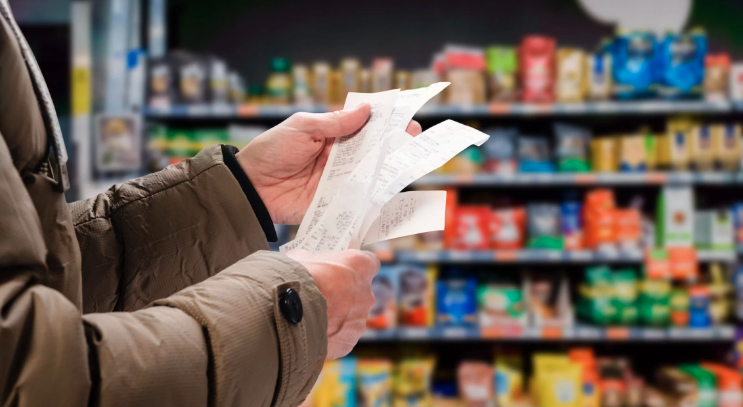Inflation has increased sharply since the start of 2021 as the global economy grapples with the aftermath of the COVID-19 pandemic and Russia’s invasion of Ukraine. This column draws on a long tradition of research on input-output linkages to trace the proximate contributions of energy and import costs to the cost-of-living crisis in the UK. As of 2022 Q4, over 70% of the annual rate of inflation was due to these external pressures. Overlooking the role of energy and imports in the domestic supply chain overestimates the extent of domestically generated inflation.
After decades of subdued price growth, inflation hit double digits in many advanced economies and created a cost-of-living crisis for families (Soldani et al. 2023). Global energy and commodity prices increased sharply after the pandemic and the war in Ukraine. This contributed to increased revenues for about a third of OECD countries that export these items, including Norway and the US (ONS 2022a). In contrast, importing nations suffered large losses in their purchasing power. In recent work, we quantify the extent to which imported and domestically generated inflation deepened the cost-of-living crisis in the UK (Dhingra and Page 2023).
The UK is a net importer of goods and energy, and the current surge in world commodity prices has created its biggest terms of trade loss since the 1970s (ONS 2023). Consumer price inflation (CPI) has been above 10% since September 2022 and household consumption has still not recovered to pre-pandemic levels seen in 2019.
The increase in global energy and commodity prices has had a direct, mechanical effect on consumer prices. For example, the UK is a net importer of natural gas, a globally traded commodity that is used to heat most UK households and fuels roughly one third of the UK’s electricity generation (ONS 2022b). In late August of 2022, the spot price of natural gas for the UK peaked at over 2,000% above its pre-pandemic level. And in 2022 Q4, annual growth in the consumer price index peaked at 10.8%, with the direct cost of household utilities contributing 3.2 percentage points. Despite the small share of utilities in household budgets (3.6%), direct energy costs made up about a third of the squeeze suffered by families because of the huge increase in gas prices and the limited substitution to other sources of energy.
The widespread use of energy and other imported commodities across all sectors of the economy means there are also broad-based knock-on effects on prices of goods and services other than household utilities. To fix ideas, take the example of sliced white bread. The price of a loaf in the UK increased from 108 pence in January 2022 to 139 pence in January 2023, an increase of almost 30%. While bread is rarely directly imported by households, it is indirectly reliant on imported inputs. Prices of electricity for ovens and wheat for flour rose sharply after the invasion of Ukraine. Consequently, households experienced imported inflation indirectly through their consumption of domestically produced bread.
High levels of international and domestic production fragmentation mean that final imports for consumption substantially underestimate the role of imported inflation. A long tradition of research on input-output linkages traces the use of all upstream energy and import costs along the domestic supply chain (Leontief 2008).
Based on national supply-use tables, Figure 1 splits the value of the UK’s CPI basket into the share that households spend on energy bills for final consumption, and the shares that they spend on imported and domestically produced goods and services (other than energy). Further, Figure 1 accounts for the fact that domestic items, in turn, can be broken down into the costs of making these items: energy (input) costs, other imported input costs, compensation of employees, taxes, and a remainder retained by domestic sellers and suppliers as their gross operating surplus.
Directly, imports (other than energy) for final consumption make up 16.8% of the value of items in the CPI basket, while the share of domestic items that households buy for final consumption is 79.6%. But these final consumption weights underestimate the imported content of the CPI basket. Because of their use by domestic sellers and their domestic suppliers, the share of energy and imports in the CPI basket almost doubles from 20.4% to 38.8%. Taxes are a small share of additional costs for domestic firms, while compensation of employees makes up about a third of the value of the CPI basket. The remainder 24.1% is retained as gross operating surplus.
Figure 1 Shares of energy (final and total use), imports (final and total use), employee compensation, taxes, and gross operating surplus in the UK’s CPI basket
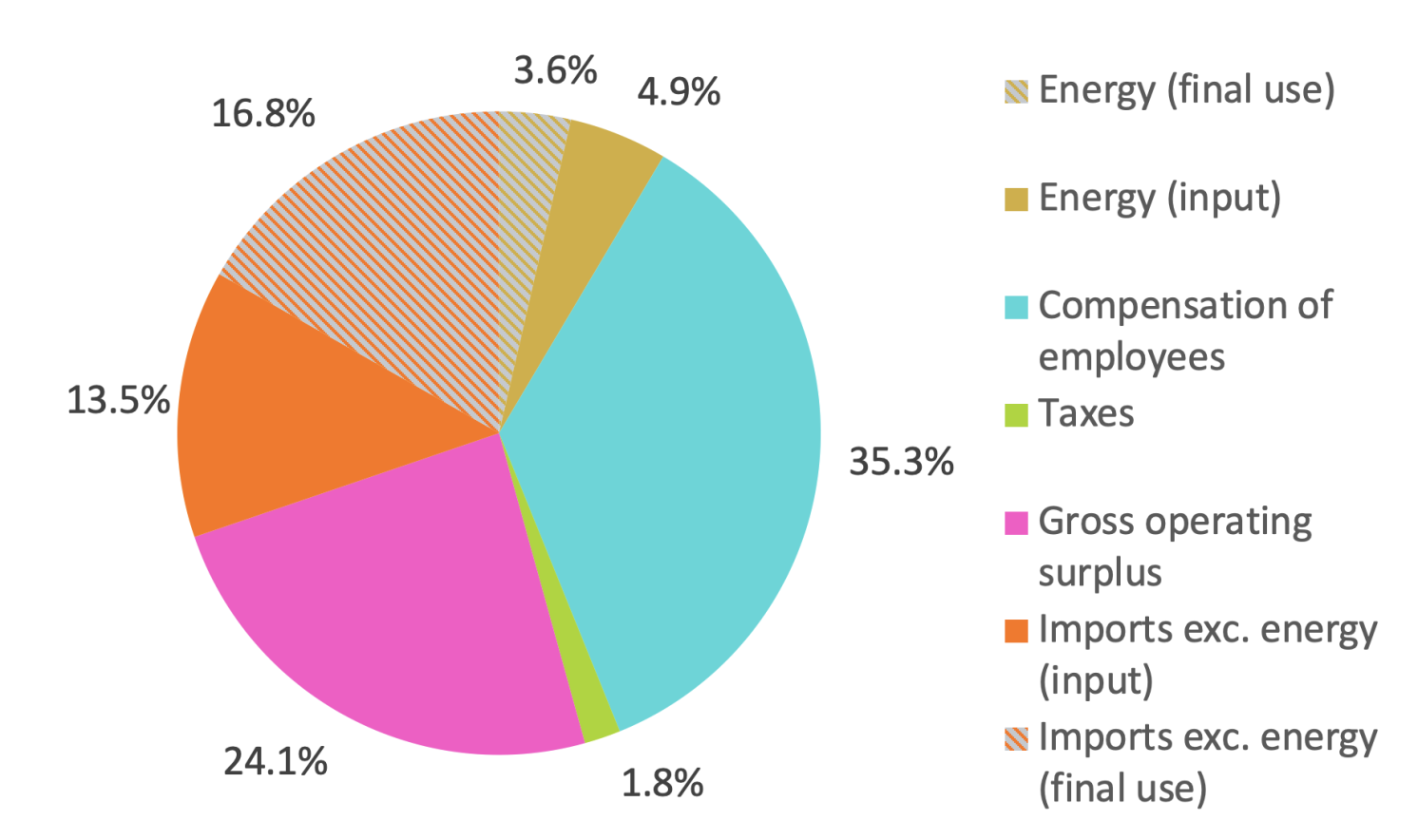
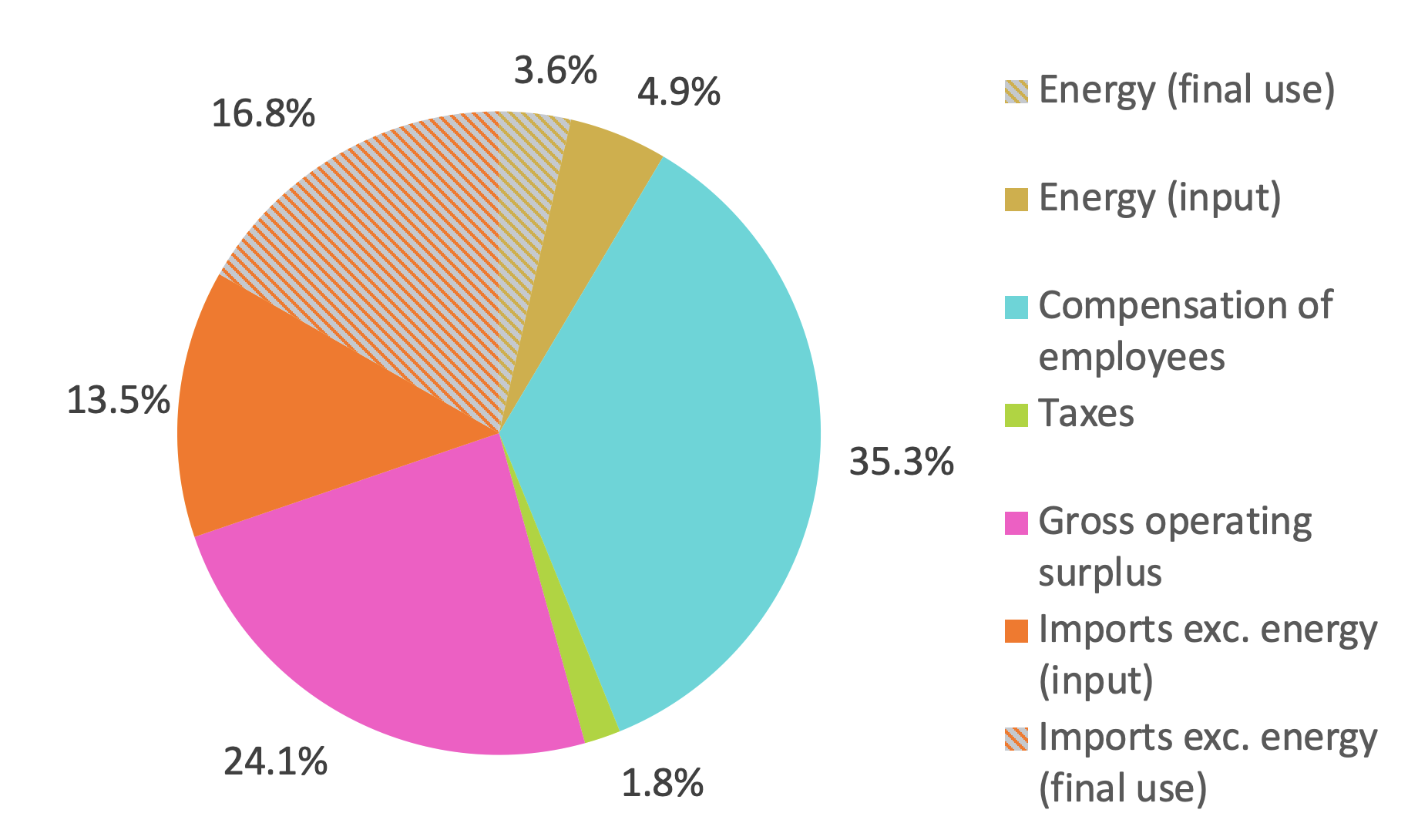
We can trace out the final and total use shares shown in Figure 1 for each of the 83 items in the CPI basket. This gives us how much of a CPI item is sourced for final consumption by households and how much of energy, imports, labour, and profits are directly and indirectly embodied in domestic inputs that go into supplying that item. These shares can then be combined with their price indices to determine how much of the recent surge in inflation is driven by the rise in prices of each of these components. For example, how much of consumer price growth of an item is driven by the use of energy to supply that item or by wages paid to those employed to supply that item?
We have price indices for the components in Figure 1 – energy, imports of each input used, wages of domestic workers employed in each sector, and taxes charged to domestic firms. What we don’t directly observe is how the gross operating surplus of domestic firms evolves over time. But because we observe the consumer and producer prices that domestic firms earn from households and other businesses, as well as the costs that they incur to supply these items, what is left over is how much firms retain as their gross operating surplus.
Figure 2 shows how much of CPI inflation (in black) was driven by each of the components in Figure 1. In 2022 Q4, CPI inflation was 10.8%, of which 5.0 percentage points was driven by final and total use of energy, down from over 6.0 percentage points in Q2 as the sharp ascent of energy prices slowed. Another 3.2 percentage points of CPI inflation came from final imports and imported inputs. On the domestic side, while labour costs have a relatively large share in the value of the CPI basket, the rise in unit labour costs constituted only 1.4 percentage points of the annual rate in the last quarter of 2022. Our residual – which we loosely interpret as profits retained by domestic sellers and suppliers – contributed 0.9 percentage points. Taxes and statistical error (from comparing chained and unchained indices) make up small shares of the observed inflation over the period.
Figure 2 Decomposition of CPI inflation into shares of energy (final and total use), imports (final and total use), employee compensation, taxes, and gross operating surplus, 2012 Q1 to 2022 Q4
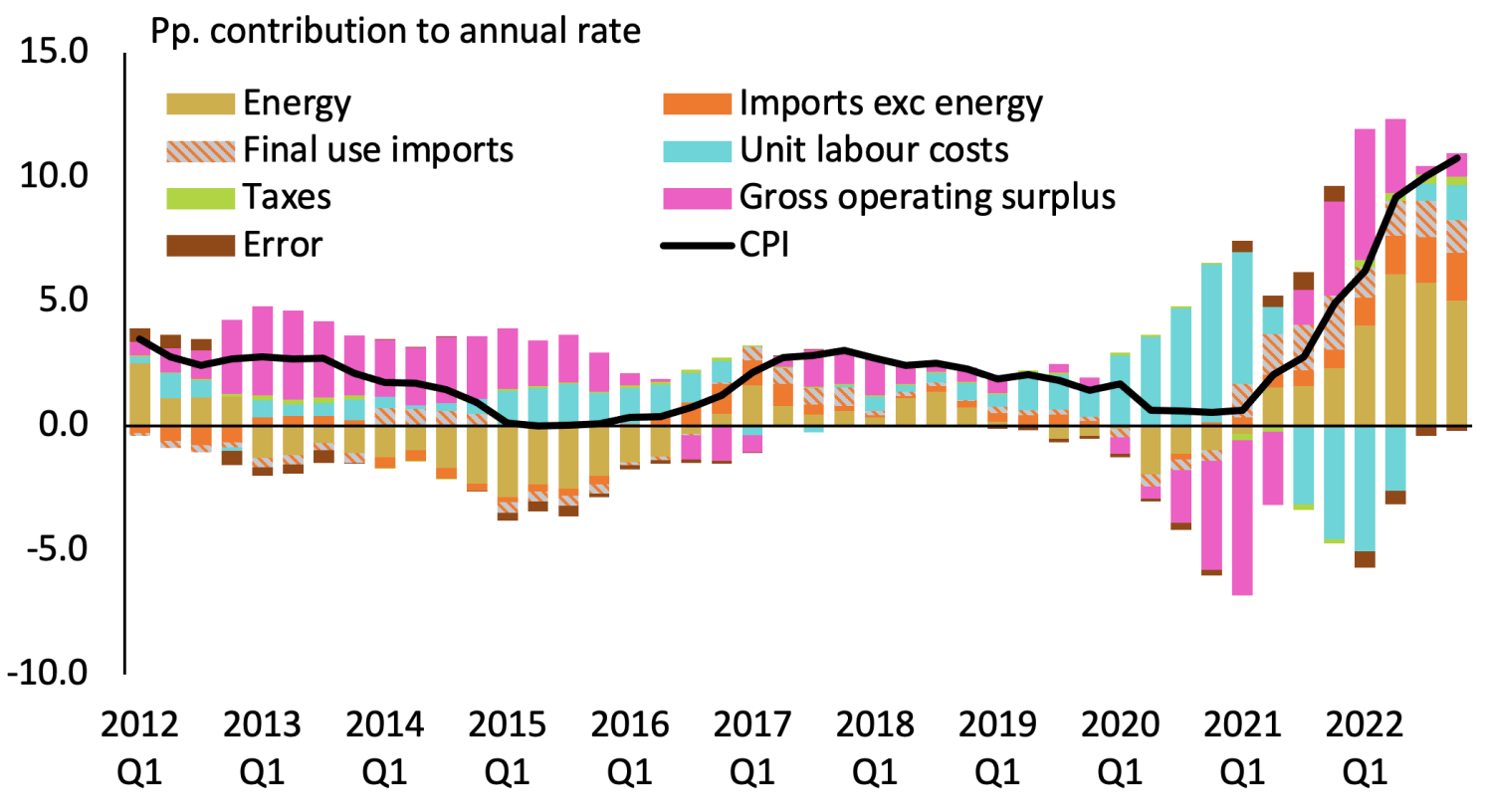
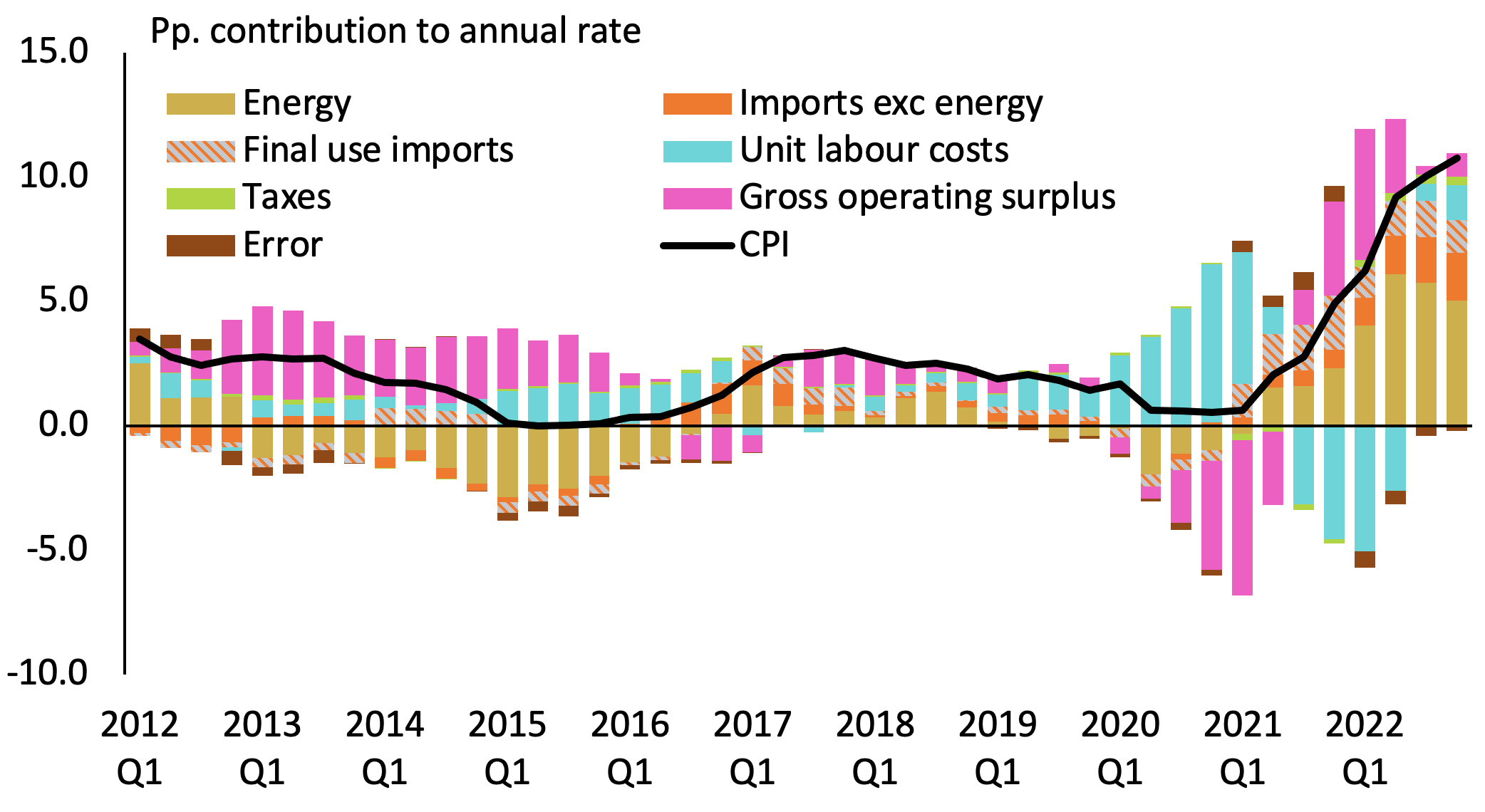
To look through measurement issues associated with the pandemic period, Figure 3 plots the contribution of each component to the cumulative percentage change in headline, core, services, and core services CPI between 2019 Q4 and 2022 Q4. For headline inflation, we observe that domestically generated inflation from wages and profits made up only 3.6 percentage points of the almost 17% rise in the index over this period. Imported inflation through energy and other imported inputs contributed 12.7 percentage points, even towards the end of 2022 when energy price inflation slowed in global markets and domestically due to the energy price controls of the UK government.
Imported inflation has therefore been the dominant source of the cost of living crisis in the UK, making up over 70% of headline inflation. Domestically generated inflation, through wages and profit margins, has been relatively subdued despite the scale of the terms of trade loss experienced by the UK.
Figure 3 Decomposition of headline, core, services, and core services CPI inflation into shares of energy (final and total use), imports (final and total use), employee compensation, taxes, and gross operating surplus, 2019 q4 to 2022 q4
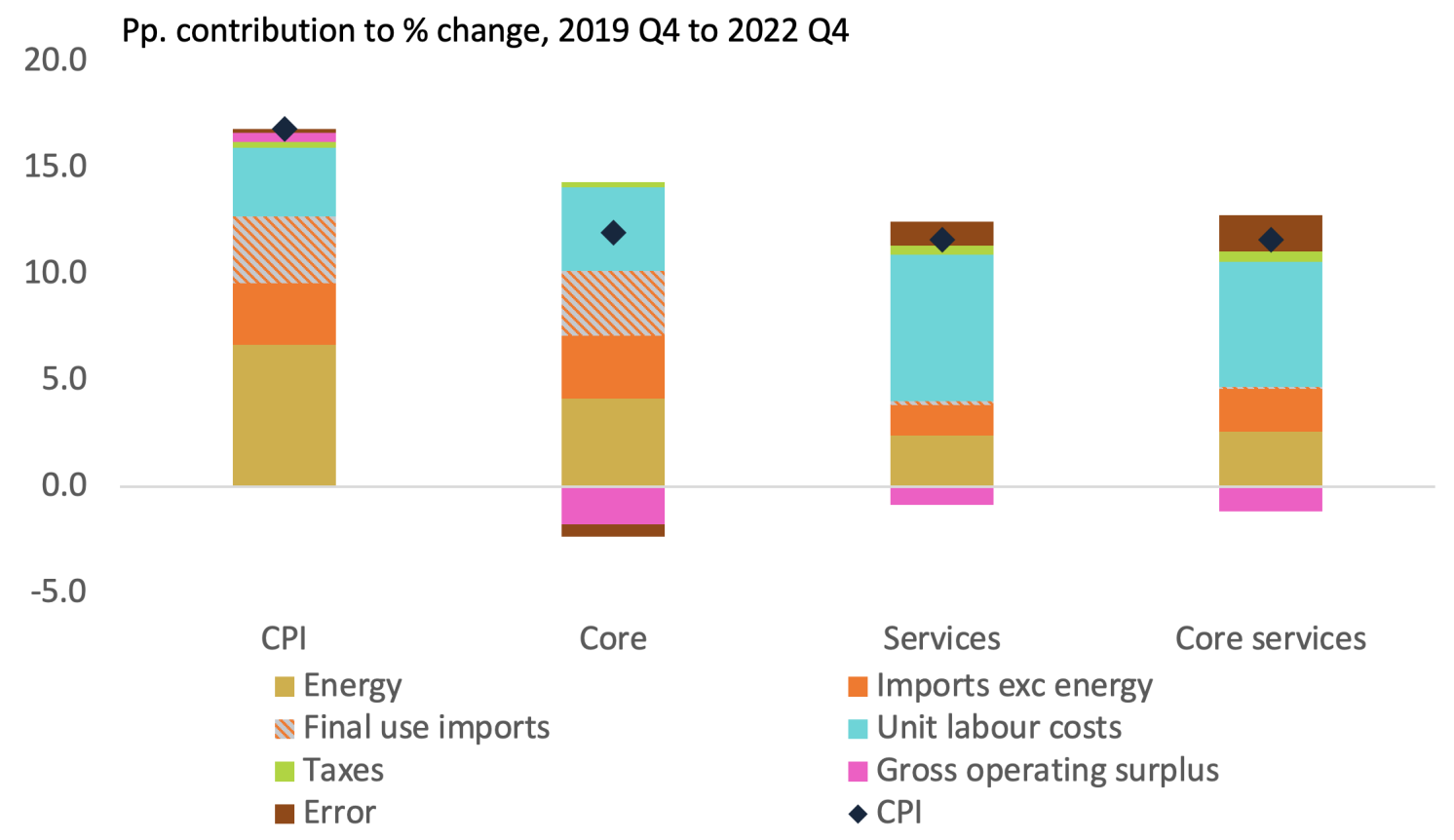
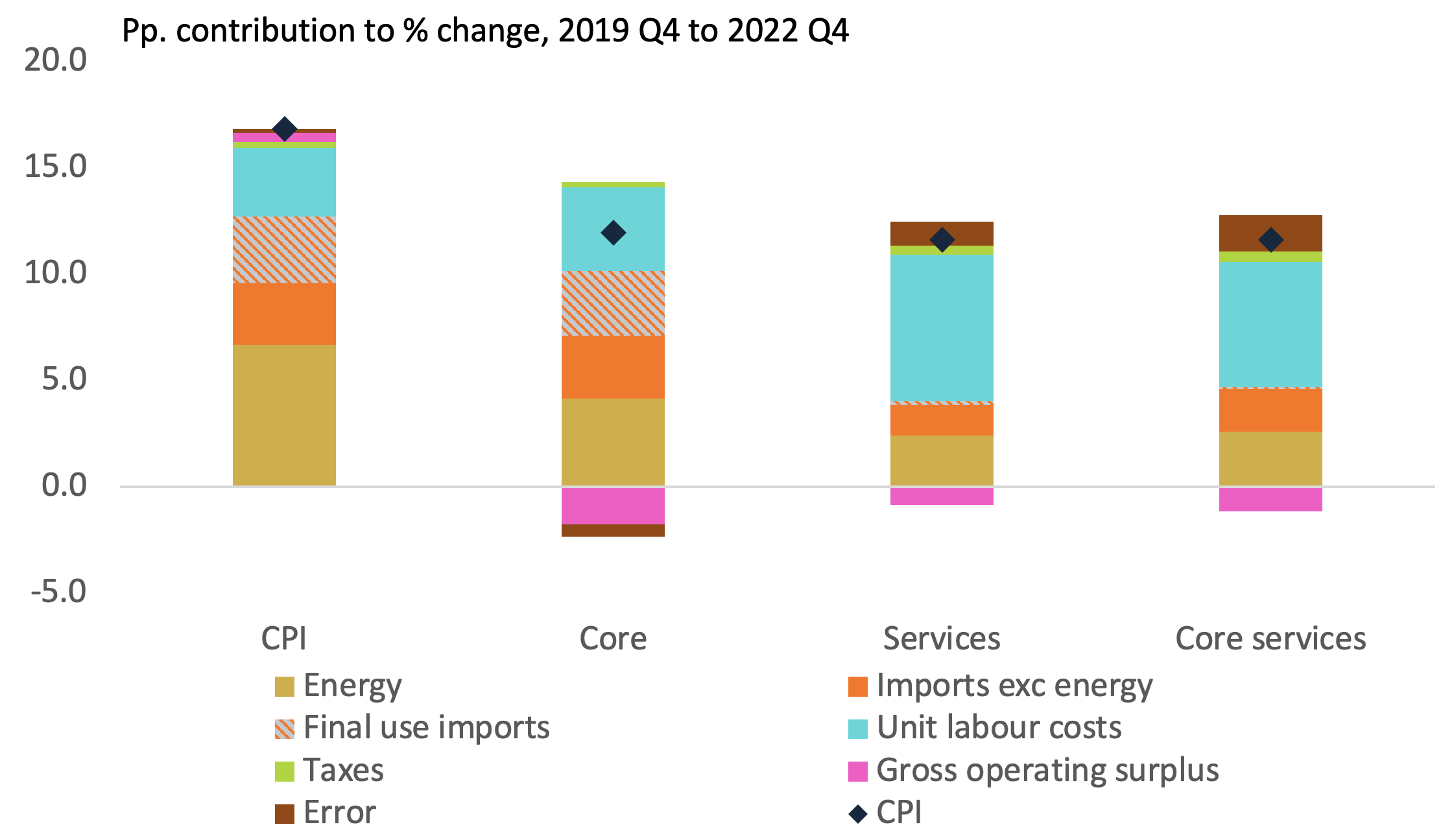
There are naturally concerns that the scale of the inflationary shock could result in still further inflationary pressures from domestic price and wage negotiations after the imported inflationary shocks have abated. This has been a key reason for the tightened stance of monetary policy among importers, including the UK and the euro area. Higher interest rates dampen domestic economic activity in the future and in doing so, also dampen the momentum in margin and pay increases.
Assessing this momentum over the medium term however is difficult, and central banks often consider wage growth and labour market indicators to assess future growth in domestically generated inflation. Profit margins from domestic sales are hard to measure and are not part of the standard toolkit of monetary policy (Van Reenen 2018). Our analysis in Figure 2 shows that wages and residual profits have evolved differently through this inflationary episode. Therefore, wage growth alone is unlikely to be a sufficient statistic for the momentum in domestically generated inflation.
Central banks also consider other measures of inflation to gauge the evolution of domestic inflationary pressures, such as core inflation (which strips out volatile, and often imported, items such as energy and commodities), services inflation (due to its higher share of domestic costs in production), and core services inflation. Figure 3 recreates the inflation accounting decomposition for these three commonly used measures. As with headline CPI, imported inflation is a key driver of growth in these indices because they also contain a large share of imported content through their use of energy and other commodities. These cuts of the data are far from ‘pure’ measures of domestically generated inflation.
In fact, overlooking the large and pervasive imported content in domestic supply chains overestimates the inferred momentum in domestically generated inflation. Collection of price statistics along the supply chain are essential to enable central banks to assess domestically generated inflation and to start to determine the role of profit margins, along with labour costs, in generating domestic inflationary momentum.



